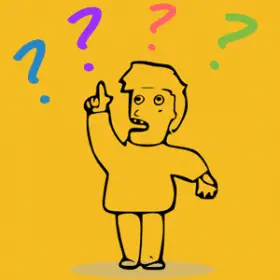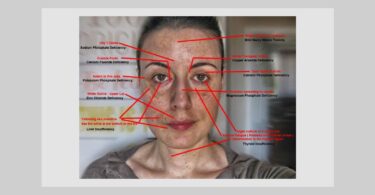What Kent and Hahnemann Said About Aggravations; Skipping LM Potencies
Hi Elaine,
Is there any place in The Organon or other authoritative book where it states that you shouldn’t skip LM potencies? For example, that you shouldn’t go from LM 1 to LM 4, etc.?
Hi Alan, I decided to go to Dr. Luc De Schepper’s Hahnemann Revisited for this answer, his chapter on LM’s, and here’s what it says:
Page-89:
Most homeopaths today… look for an aggravation to demonstrate the remedy is working. … they attribute this approach to Kent… But in fact, Kent himself did not approve of bringing about aggravations as we can see in his Lesser Writings: “Keep the mild potency as long as it works. It is not well to jump degrees. … We do not seek to produce an aggravation. … You encourage the patient to become oversensitive by using the highest potencies instead of going low to begin.”
Page-99:
The curative action of the correct remedy should be so rapid that you will rarely need to go higher than LM10 before a new remedy, if any, is called for. In my experience, chronic cases are usually resolved by LM5 or 6, and often by LM2 or 3. Hahnemann’s own LM pharmacy contained many remedies from LM1 to LM10 and only a few up to LM30 such as Sulphur and Merc-sol. for the treatment of syphilis so rampant in his time.
Page-100:
There is no leap or jump in this method. The patient starts with LM1 and goes up to LM2, then LM3 and so forth after finishing each bottle … making a very smooth progression of potencies. It is in the nature of chronic diseases that they do not aggravate suddenly, but progress gradually and slowly. So the potency of the medicine should not be increased suddenly. The cure also comes slowly and gradually. It is the nature of the real cure, the homeopathic cure.
The Eizayaga “Layers” Approach, As Explained By Julian Winston
Elaine, I wanted to understand, is the “constitutional level” a sort of a “ground floor”, the one I was supposedly born with?
And the constitutional remedy can be a remedy that suits my constitution at the moment? Meaning, it can be useful for my current layer (if there is more than one), but it might not be useful for my “ground floor level” (“constitutional level”)? See below:
The Eizayaga Layers Model
by Julian Winston
Having seen Eizayaga in one of his first USA seminars, I’ll share his thinking with you. It is a fascinating model, and one which I’ve used to explain “health and disease” to allopathically-oriented people.
Eizayaga sees this as a triangle; point down, with divisions running across the triangle parallel to the base. He had “birth” as the wide base on top, and “death” as the point on bottom.
BIRTH
Division 1: The Soil (the terrain).
This is the genetic heritage the person brings into life – disposition to allergies, and to illness later on. Remedies that affect this level are Nosodes. Sometimes this level has to be treated, sometimes not.
Division 2: The Constitutional.
This is what the person is when they are born. These things can’t be changed– the bone structure, build, color of skin, color of eyes, hair, etc. There are few remedies that work here. Most babies are fat, sweaty, and like milk. Most fit Calc carb. Some which are hot and dry, may need Sulphur. Some need Phosphorus. Some need a mix – as seen in Calc phos., Calc sulph.
Division 3: The Fundamental.
This is a “layer” that comes in life. The baby cries. The mother says to herself, “I’m too busy right now, he’ll learn to wait.” The baby says, “I cry and she doesn’t come. I am abandoned” – and becomes a clingy, whining Pulsatilla. These “layers” can build on each other – the loss of a friend in school may lead to the withdrawal of Nat mur, etc.
So far, NONE of these stages are treatable with conventional medicine. There is NO disease. Only homeopathy can help restore balance.
Division 4: Lesional
(treatable, reversable, curable)
Now the person starts to exhibit physical pathology. At this point conventional medicine may think it can help. This layer, with homeopathy, can be cured to the point of the pathology being removed.
Division 5: Lesional
(treatable, non-reversable, semi-curable)
In this category we find cases of tuberculosis where damage done to the lung cannot be reversed, or of alcoholics with severe liver damage. The process can be treated and cured, but the organic damage cannot be reversed. The patient’s health is compromised.
Division 6: Lesional
(non-treatable, non-reversable, palliation)
The physical pathology is too far gone. All homeopathy can offer is palliation.
DEATH
Eizayaga stressed that the mistake many “Kentians” make is giving the Fundamental remedy instead of the Lesional remedy. The example he uses is that of a sweet woman, easily moved to tears, coming with menstrual problems characterized by a stringy discharge.
If you treat the Fundamental (i.e., Pulsatilla) she will feel better, but the discharge will remain. The Lesion MUST be treated first (Kali-bi), and then the Fundamental.
The great “miracle cures” happen when the Lesional and Fundamental ARE the same remedy – then *everything* gets better. But treating only the Fundamental will not cure the Lesional if they are in need of different remedies.
So, first cure the Lesional, then the Fundamental. Then, maybe the *next* underlying Fundamental – until you either get to the Constitutional, or you run into a block and have to go to the “Terrain” and clear that up first.
Visit: Julian Winston’s homeopathic library
http://www.wholehealthnow.com/homeopathy_pro/eizayaga_layers.html
Great article, I loved it! This is my orientation, it’s what Robin Murphy teaches. He studied with Eizayaga.
Eizayaga stressed that the mistake many “Kentians” make is giving the Fundamental remedy instead of the Lesional remedy.
Absolutely! This is what I was trying to tell you in my last email. The tardive dyskinesia you suffer from is the lesion. Most homeopaths would be looking to give the “fundamental remedy” here, the remedy that matches your “mentals and emotionals”. Sometimes the “fundamental” and the “lesional” are the same. But either way, what’s missing is the knowledge to give the lesional remedy first! In your case, the lesional remedy was caused by a drug. It’s a drug side-effect. But in truth, most of what we see nowadays, is, in fact, a side effect of some drug! I wrote an article called “The Side Effects Can Kill You!” It’s about all the “diseases” out there that are really just side-effects of drugs! And of course, they then want to give even more drugs! But yes, the lesional remedy comes first. I suggested Rhus tox, and if that didn’t work, we should make a remedy out of the drug you were on.
The example Julian uses is that of a sweet woman, easily moved to tears, coming with menstrual problems characterized by a stringy discharge.
If you treat the Fundamental (i.e., Pulsatilla) she will feel better, but the discharge will remain. The Lesion MUST be treated first (Kali-bi), and then the Fundamental.
I totally agree with this. This is how I practice.
The great “miracle cures” happen when the Lesional and Fundamental are the same remedy.
Right. But this is rare.
Treating only the Fundamental will not cure the Lesional if they are in need of different remedies.
So, first cure the Lesional, then the Fundamental. Then, maybe the *next* underlying Fundamental – until you either get to the Constitutional, or you run into a block and have to go to the “Terrain” and clear that up first.
Yes, I agree with all of that. Julian Winston’s library is very informative!
That is about the only accessible article on constitutional levels that I could find on the internet.
You struck gold, I’d say!
How Do You Dose In Acute and Chronic Cases?
Dear Elaine,
It’s been several days since my “zapping” dose of Ignatia in the 175th cup, the aggravation is finally beginning to subside to where I can think and function better.
Great! The Aggravation Zapper finally is working, except that it took longer than I expected! And I don’t think that I’ve ever had to go to 175 cups before! Normally, I say, “Do the Aggravation Zapper in the 12th cup” and the problem is solved!
(See “The Aggravation Zapper”: https://elainelewis.hpathy.com/the-aggravation-zapper/)
It’s just a reminder that if a person is having an aggravation, there’s no limit to the number of “cups” one might need to go to in order to stop it. Never give up, I guess, is the lesson here!
I’ve decided to educate myself as thoroughly as possible on homeopathy, yet am discovering there are many different beliefs and methods. (Clearly so, as I’ve experienced).
I think your case is proof that there are many methods that are arbitrary and capricious!
I’d like to get beyond the generic “cut-and-paste” basic information so that I can get a ‘real’ education, so to speak. For instance, there is a book I came across that is titled, “The Complete Book of Homeopathy” yet it is only 100 pages long. This I laugh at because at only 100 pages, it most definitely is not the complete book of homeopathy! I also have found a homeopathy pamphlet that said it didn’t matter if you took 1 pellet or many… I have found this not to be true as well.
It doesn’t matter, the number of pellets, as long as the patient isn’t hyper-sensitive, but nowadays most people are.
May I please ask you some questions for my own educational purposes?
1.) How do you typically dose? For instance, you start at the lower potency of 30c and work your way up the ladder?
First of all, correction: 30C isn’t a low potency. It’s a medium potency.
Chronic cases: Generally speaking, start your chronic case off with 6C, 2 pellets in a small bottle of water, one sip, three times a day, 5 succussions before each dose (a dose is a sip). However, this has to be adjusted going forward based on how the patient is responding. At some point, the potency will wear off and moving up to the next potency is required. I explain how to raise the potency of your remedy in my FAQ article:
https://hpathy.com/homeopathy-papers/frequently-asked-questions/
Of course, you can also simply buy or order the next potency if you have the luxury of waiting.
Acute cases: 30C three times a day, 2 pellets in a bottle of water, 5 succussions before each dose. However, if there’s a striking improvement, stop dosing, or dose less often. If there’s an aggravation, stop dosing (same for chronic cases). In general, dose as needed. Also, consider one dose of a 200C instead of 30C three times a day.
2.) How do you know when to re-dose the same potency? For instance, do you take a 30c and when it feels like it’s not working anymore, take another dose?
Yes.
3.) How does single dosing work?
If you have an acute, very often a single dose of a 30 or 200C is enough and you see improvement right away. If you have a chronic case, daily repetitions of a low potency is more effective; it’s the difference between carefully chipping away at cement or hitting it hard one time with a sledge hammer–not very smart. Most chronic cases have calcified, hardened into cement.
I understand you take a single dose,
No, that’s what one “school” of homeopathy does; and again, that’s fine for acutes, not very smart for chronic disease.
but again, do you wait 3 months before taking another or is it 1 forever?
There’s no such thing as a one-size-fits-all dosing schedule in homeopathy. If you were doing well and then relapsed, it’s time to dose again.
Frankly, you’re constantly re-evaluating the dosing situation: “Do I still need to be taking this remedy every day? Can I go to every other day now? I’ve been consistently well for 5 days in a row, shouldn’t I be taking the remedy less often?” This is how you should be thinking, not blindly adhering to a dosing schedule, even if the “schedule” is one single dose and wait. Many times it has happened that a patient improves and then the improvement stops, and I always say, “Didn’t you repeat the remedy?” And they say, “No, the homeopath changed the remedy to something else.” And I say, “You mean you stopped a remedy that was working??????”
You know, people seemed to be shocked that a remedy stops working when it’s perfectly normal! Remedies stop working all the time! All you have to do is repeat them! And if that doesn’t work, raise the potency or ask yourself if there could be some explanation for why the remedy stopped working. Maybe you suffered a grief or a loss or a shock, or a virus or an injury calling for an inter-current remedy to be given. Maybe you need Arnica now. After that, the previous remedy might work again.
4.) When do you know it’s time to bump up in potency?
When you repeat the remedy and nothing, or very little, happens.
5.) How do you know which potency to start with? (Always start low?)
Start low if it’s a chronic case. You can always go up in potency if you need to.
6.) How do you take a complimentary remedy? For instance, Sepia compliments Nat Mur. Does this mean to take sepia at the same time, in between Nat-mur doses?
No.
Or after Nat mur is done being taken entirely?
Just because Sepia has a complement doesn’t mean you need to give it now, or later, or ever. No need to give a so-called “complement” unless the symptoms call for it, or the remedy stops working and raising the potency didn’t work and now you’re at a loss. I don’t think I’ve ever given a remedy just because it was another remedy’s complement and for no other reason.
However, it does make you think about what remedy could possibly be “underneath” the one you’re giving. For example, if you were giving someone Nux vomica, and knowing that Sulphur is the complement of Nux vomica, you might ask yourself, “I wonder if so-and-so is a constitutional Sulphur?” You might ask that person, “Did you used to have a problem with burning hot feet? Did you used to stick your feet out of the covers at night?” If they say, “Yes, how did you know?” You’d then have a bit of confirmation that, in fact, this is a constitutional Sulphur case; so maybe when the Nux v. state is cured, you might consider giving a dose of Sulphur to this person.
7.) How do you know for sure when the remedy has completed it’s workings on the body all together and it’s time to start a new remedy, such as a complimentary remedy?
You know the remedy’s done if, 1. you get better; and 2. if a new state emerges causing you to have to switch remedies to deal with it.
Thank you greatly for your time and your assistance!








Very helpful article, Elaine. However, I’ve given Aurum-ars in a 1m to a couple of members of my family. It was necessary because they don’t live with me and they have all kinds of excuses why they couldn’t possibly take a liquid dose of a low potency every day. (So ridiculous!) But that’s the way they are. I gave a bottle of Aurum-ars 12c to one of them, with instructions on succussing before each daily sip — and she drank the whole thing in one day. They don’t listen and they don’t get it. So, while chronic illnesses may need a daily dose of a low potency, it isn’t always feasible. There are probably other families out there like mine. I have to say, too, that the Aurum-ars 1m was incredibly effective.
Oh Linda, you are so right! Sometimes you just have to give a high potency one time and hope for the best! Because as you said, some people are incapable of following directions.
DEAR DR,
MY PROF DR JUGAL KISORE, THE EMINENT PR ACTIONER OF DELHI(INDIA) TEACHING M M IN NEHRU HOMEOPATHIC COLLEGE DELHI, 1ST GOVT COLLEGE IN INDIA USED TO SAY THAT CONCENTRATE MORE AND MOST ON SIMILAR AND POTENCY DOES NOT MATTER MUCH . GIVE 6 C OR 30 OR 200 ALL WILL WORK IN CURING THE PATIENT IF REMEDY IS SIMILAR. ON POTENCY THERE MAY BE DIFFERENT OPINION , REMAIN UNSOLVED BUT THE CORRECT REMEDY IN ANY CASE IS ONE ON WHICH ALL HOMEOPATHS AGREE.
REGARDS
DR C S GUPTA
Right Dr. Gupta, but when our students ask us, “What potency?” we have to tell them something! We can’t just say, “It doesn’t matter!” We can’t give the impression that you can start every case off with a CM, or that a 6C is a good potency to give for a Belladonna fever. And do you know that Hahnemann says in the Organon that too high a potency or too many repetitions of the right remedy can endanger a patient’s life? So, we have to know a little something about this.
DEAR DR,
THE BEAUTY OF THE SIMILAR IS THAT IT GIVES QUICK RESULT IN ONE DOSE AND QUESTION OF REPETITION IS NEGLIGIBLE. YOU ARE VERY CORRECT THAT POTENCY HAS ITS VALUE WHILE ADMINISTERING A REMEDY. BOTH ARE ESSENTIAL IN PRACTICE
THANKS
DR C S GUPTA.
Skipping Q potencies and using high LM potencies is not about resolving the case before, it’s about having more control over the prescription and over the case evolution. When you prescribe for exemple 30Q in liquid, just 1 coffeespoon every 48 hours but only 3 dosis and wait for 10-15-20 days before repeating, instead of giving 1Q or 3Q every day for 20 days, you can see clearly what happens after the prescription, aggravation, new symptoms, discharge symptoms, amelioration, etc. Then you can bring forward or backward the next dosis, you control the timing. Also you know if the remedy has done any good or there is mandatory a change. It’s all clearly shown at the eyes of the homeopath. So, high Q potencies allow you to control better the prescription and the evolution.
Clarity in homeopathy, thy name is ….Elaine Lewis. Another excellent column. Thank you.
Thanks for reading it, Alan!